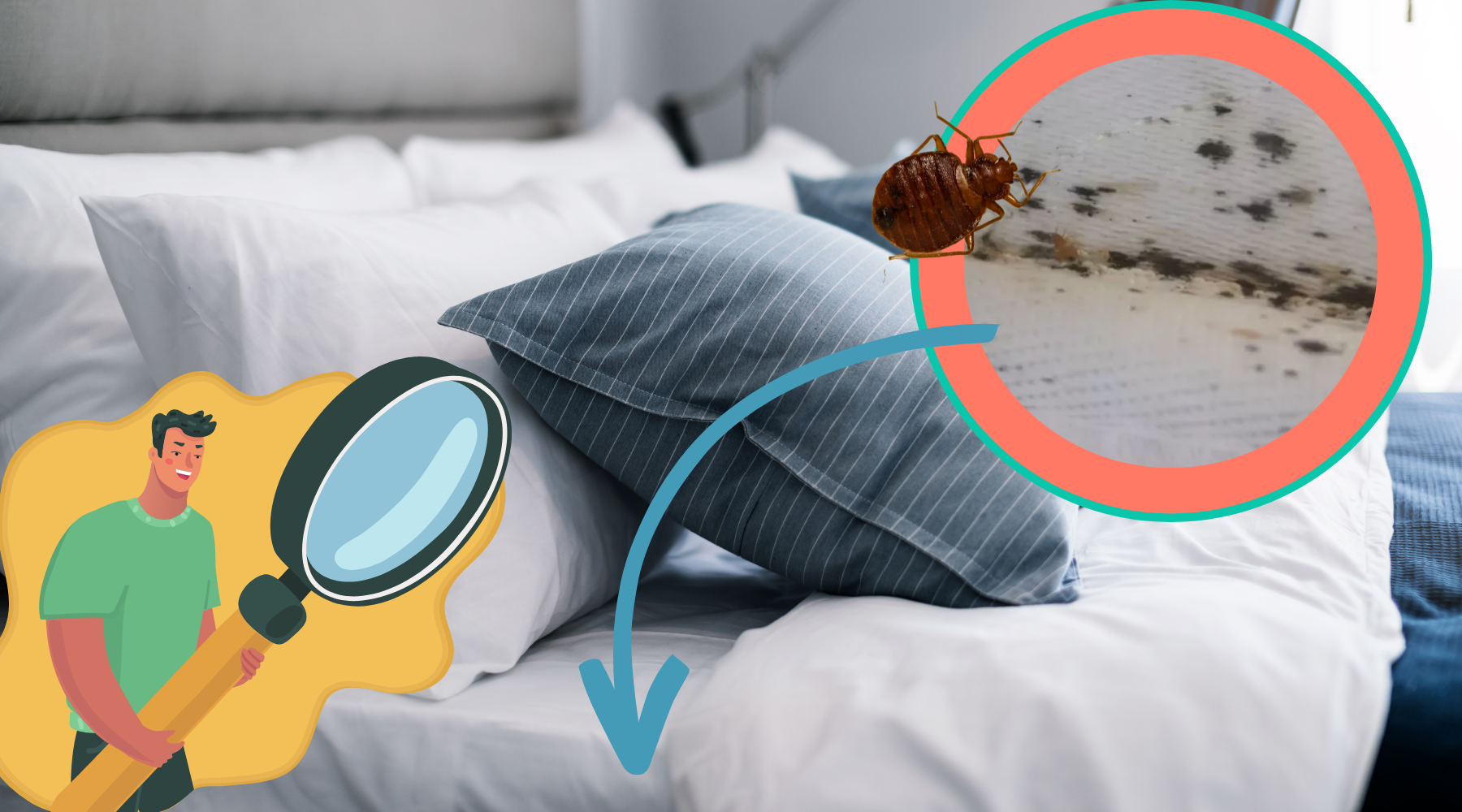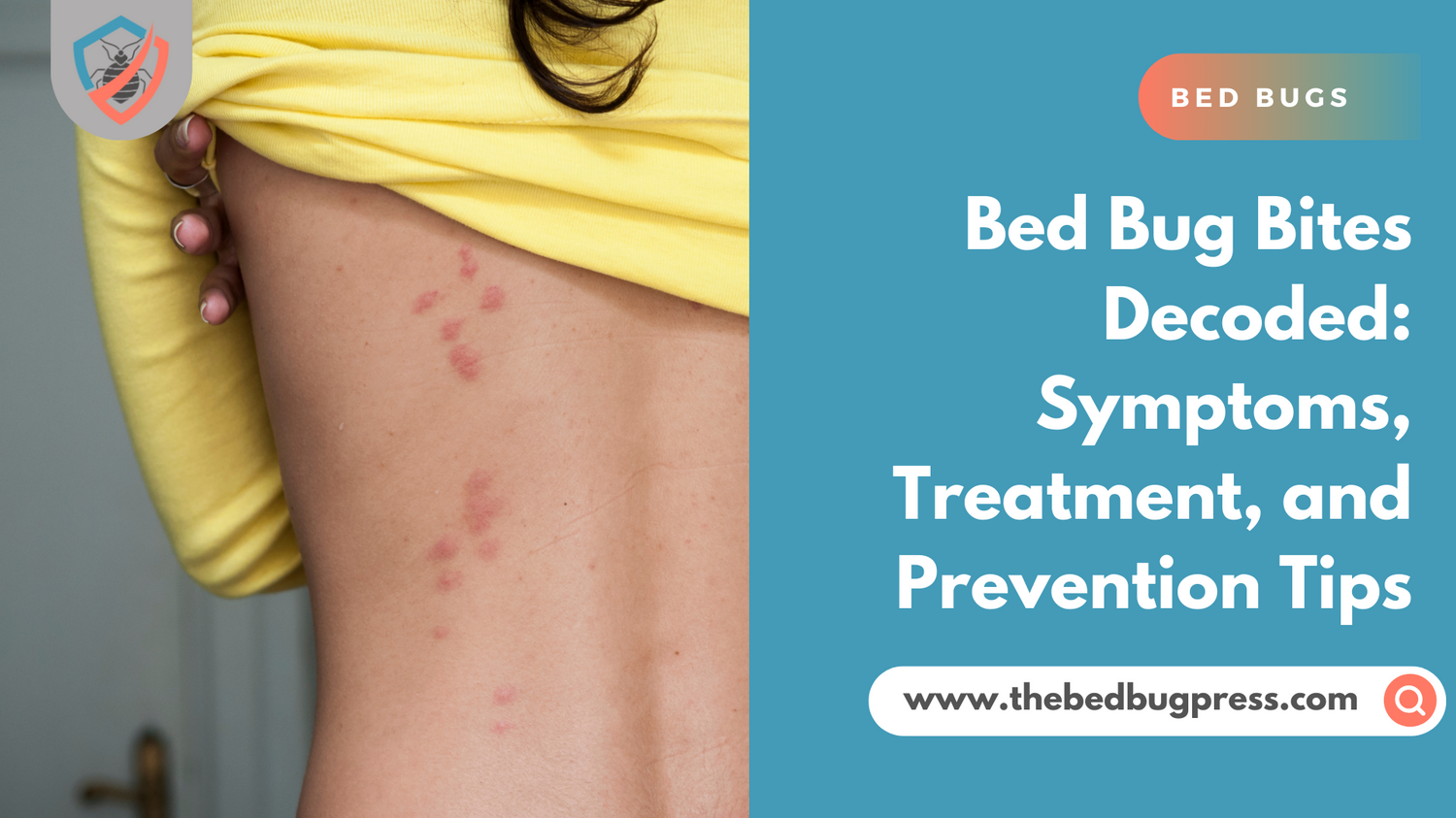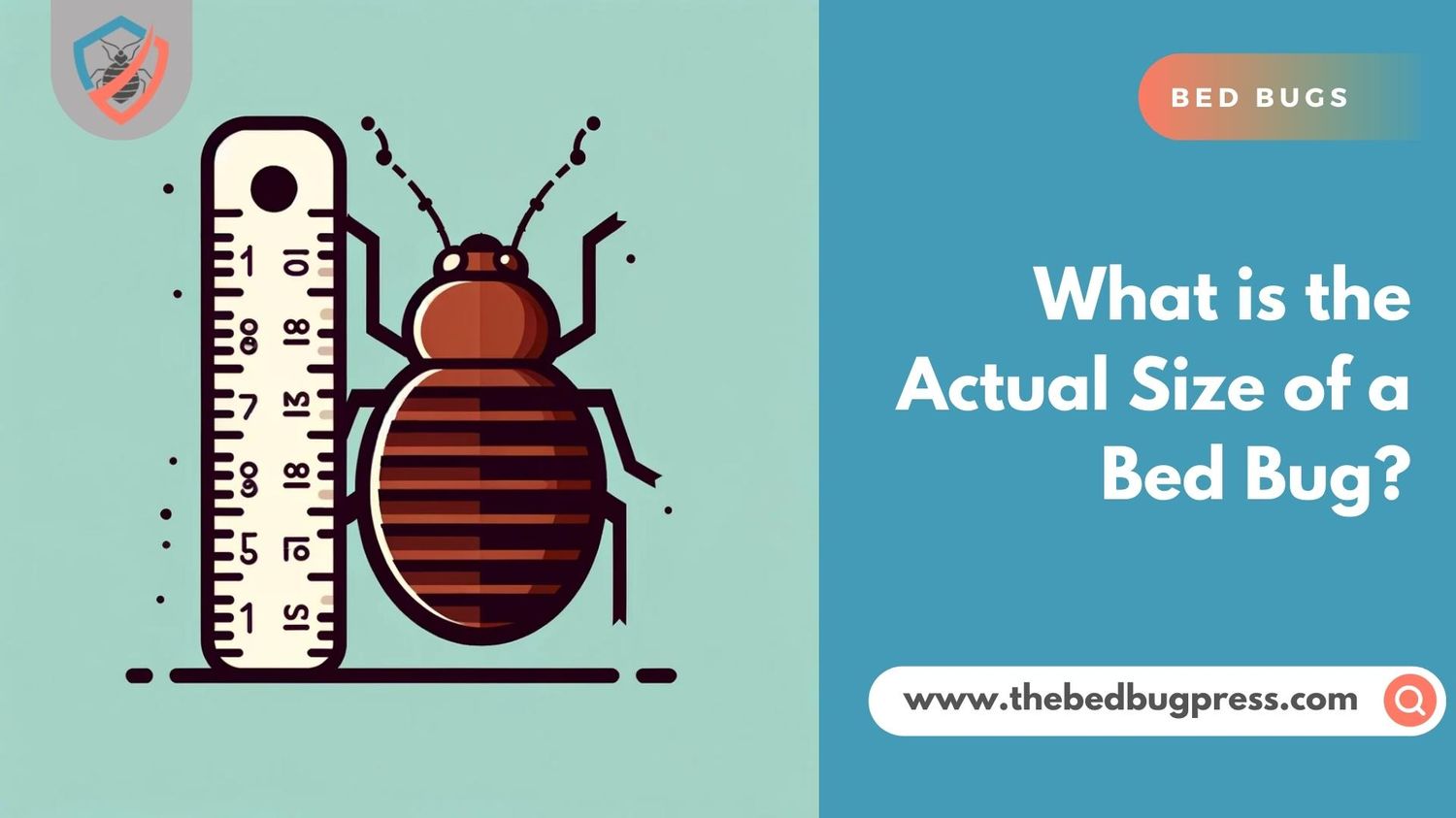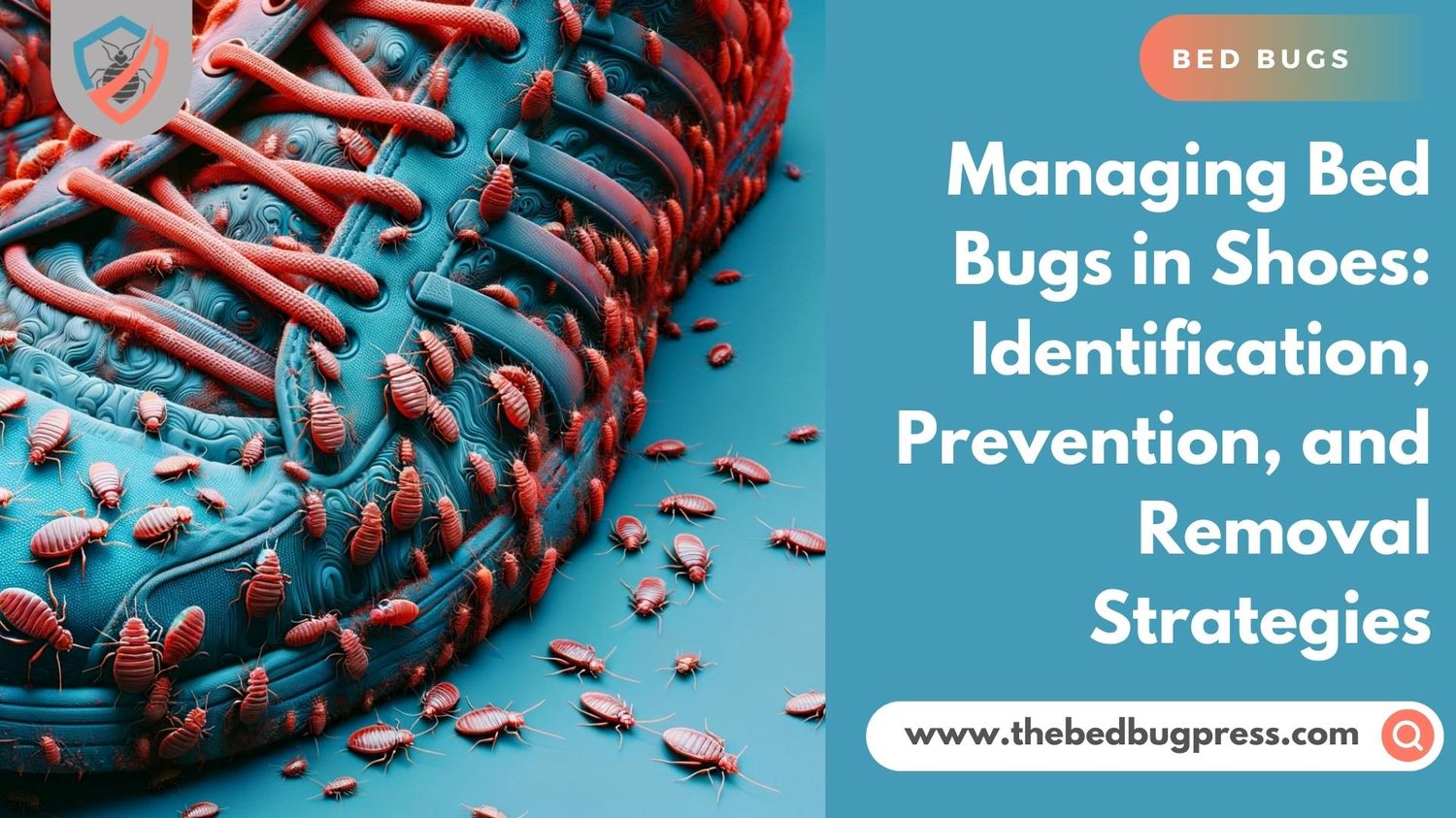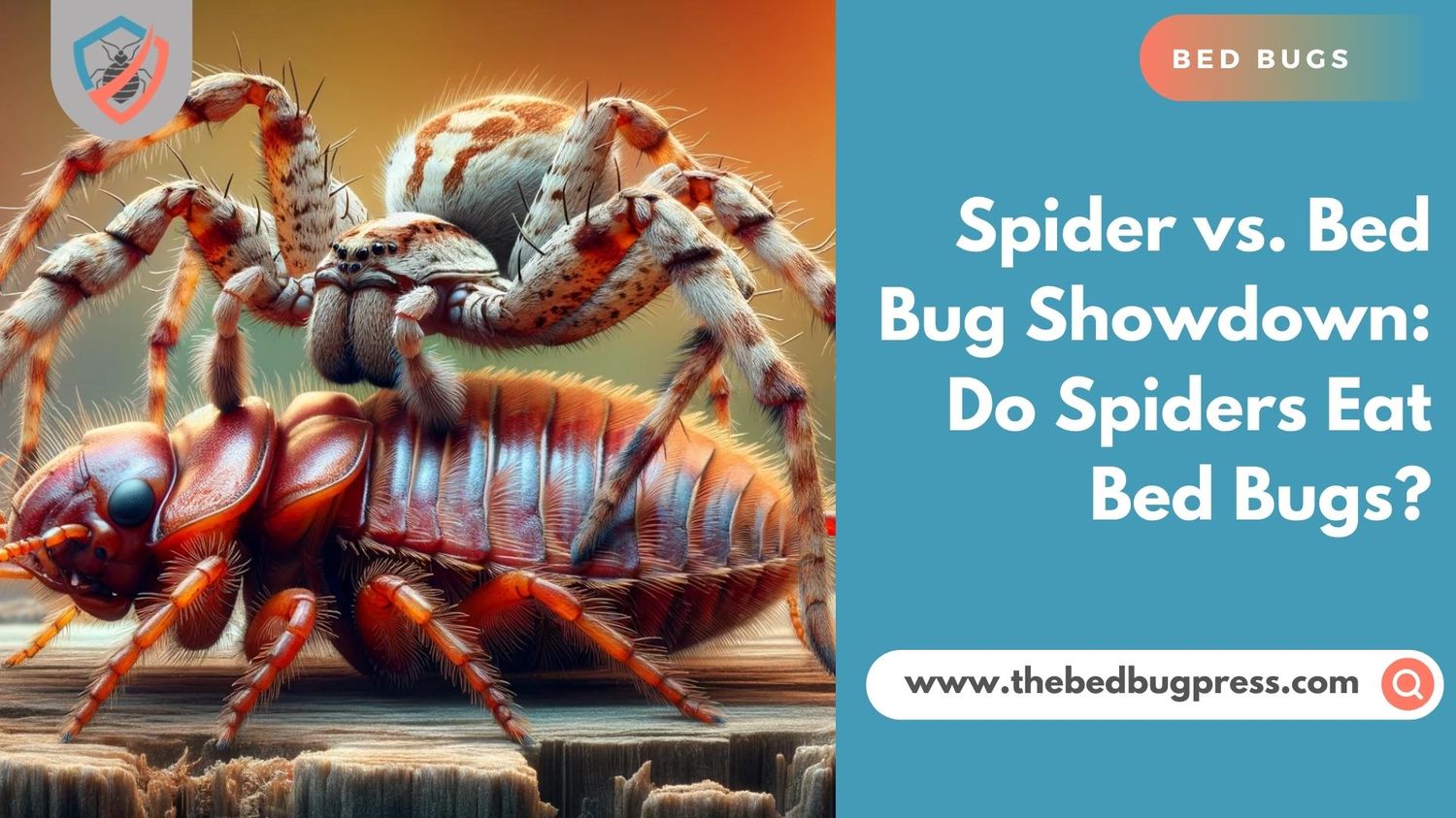Among household pests, few evoke a shiver down the spine quite like the bed bug. These stealthy, blood-sucking insects have earned a notorious reputation for invading our sanctuaries of slumber and leaving behind a trail of discomfort and anxiety.
Learning what bed bug feces look like on bed sheets will help you determine if you should start looking for other signs of bed bugs like bed bug bites, bed bug eggs, bed bug skin, and live bed bugs to confirm a possible bed bug infestation. Read on to get to know the appearance of bed bug droppings, their characteristics, and other telltale signs that bed bugs leave behind. You’ll also learn how to get rid of these resilient pests effectively.
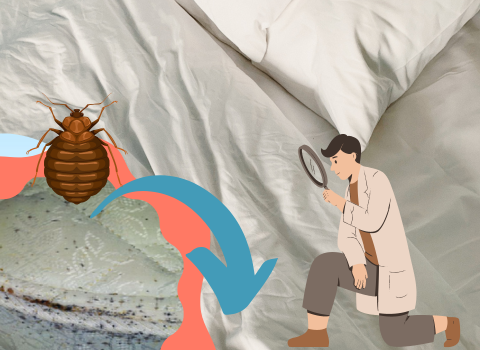
What Can Be Mistaken for Bed Bug Poop?
When it comes to identifying potential signs of a bed bug infestation, few things are as crucial as recognizing the telltale fecal traces of bed bugs. However, amidst the hunt for these minuscule droppings, one must tread cautiously, as not all stains or specks on your bedding are created equally. Below you’ll get to know more about substances that can be easily confused with bed bug poop.
Stain Residues:
Bedding and linens are prone to accumulating various stain residues over time. These can include sweat, food stains, pet dander, or even spilled drinks. These ordinary stains may resemble bed bug droppings due to their discoloration and texture. However, unlike bed bug droppings, stain residues are typically larger, less concentrated, and lack the characteristic dark brown or black coloration.
Mold or Mildew:
Moisture-prone environments can foster the growth of mold or mildew on bedding or walls. These fungal growths can appear as dark spots or patches, resembling bed bug droppings. However, unlike how bed bug droppings look, mold or mildew stains are often accompanied by a musty odor and may spread beyond the confines of the sheets.
Ink or Pen Marks:
Accidental ink or pen marks on bedding can resemble small, dark spots that might be mistaken for bed bug feces. These marks are typically uniform in shape, size, and color. Unlike bed bug droppings, ink or pen marks can often be easily washed or rubbed off.
Body Fluid Stains:
Spills of bodily fluids such as sweat, saliva, or urine can leave behind stains that may be erroneously identified as bed bug droppings. These stains can vary in color and texture, but they are usually larger and more spread out compared to the concentrated spots left by bed bugs.
By understanding these look-alikes, you’ll be better equipped to differentiate between harmless stains and potential indicators of a bed bug’s presence. This will also help you avoid unnecessary panic and accurately identify potential signs of an infestation.
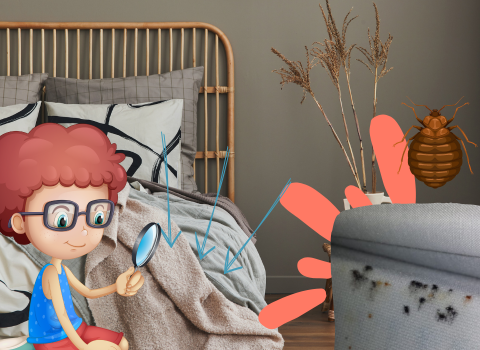
Do Bed Bugs Poop on Top of Sheets?
Have you ever wondered where bed bugs leave their droppings? One intriguing question that arises is whether bed bugs poop on top of sheets.
Below, you’ll get to know more about the behaviors of bed bugs and investigate their preferred spots for eliminating waste.
Nesting and Hiding Places:
Bed bugs are notorious for their ability to hide in crevices and cracks near the feeding sources of bed bugs. They often establish harborage areas close to their human hosts, such as mattresses, box springs, bed frames, and furniture.
These concealed locations serve as their preferred nesting spots, allowing them to remain undetected. Consequently, bed bugs tend to deposit their feces within or near their hiding places rather than on top of sheets.
Digestive Process:
Bed bugs feed exclusively on blood and have a highly efficient digestive system. As a result, their excrement is relatively dry and compact compared to other pests. The waste of bed bugs, commonly referred to as bed bug poop, is composed of digested blood and appears as dark brown or black spots.
Due to their efficient digestive process, bed bugs do not produce excessive amounts of waste, further minimizing the likelihood of it being found on top of sheets.
Stains from Defecation:
While bed bugs may not typically poop directly on top of sheets, their excrement can still find its way onto the bedding. As they move around their hiding places, bed bugs may accidentally crawl over your bed sheets, leaving behind faint traces of their feces. Bed bug stains can appear as small dots or streaks on the surface of the sheets, often near the seams or edges.
Although bed bug droppings are primarily deposited within their hiding places, it is essential to remember that their excrement can indirectly affect the cleanliness of your sheets. While not commonly found on top of sheets, the presence of bed bug fecal stains on bedding can serve as a vital clue for identifying an infestation.
What Does Bed Bug Poop Look Like on Clothes?
How can you tell if the spots on your clothes are just simple stain marks or from bed bugs? Below are some of the things that you should keep in mind as you identify bed bug feces stains on your clothes and confirm if these are from bed bugs.
Appearance and Color:
Bed bug feces typically appear as small, dark brown or black spots on clothing. Bed bug fecal stains resemble tiny ink stains or pepper-like specks. Due to the digested blood content, the color is often a deep reddish-brown or black hue. These droplets are usually concentrated and have a slightly shiny appearance.
Smear Marks:
In some instances, you may encounter smear marks instead of discrete droplets. When bed bugs are crushed or disrupted while feeding, their feces can be smeared onto clothing, leaving behind streaks or smudges. These marks may appear as elongated streaks or patches of dark brown or black.
Location on Clothes:
Bed bug droppings can be found on various areas of clothing, depending on where the bugs were present. Common locations include cuffs, collars, seams, and folds of garments. The areas in closest proximity to the infestation or where bed bugs have been actively feeding are more likely to have visible fecal stains.
Fabric Absorption:
The absorption rate of bed bug feces on clothing can vary depending on the fabric type. Porous or absorbent fabrics, such as cotton or linen, may show more pronounced staining compared to synthetic or tightly woven materials. Keep in mind that the presence of stains may differ based on the fabric’s color and pattern, making them noticeable.
By understanding the appearance and characteristics of bed bug droppings on clothing, you can be vigilant in identifying potential infestations and taking appropriate measures.
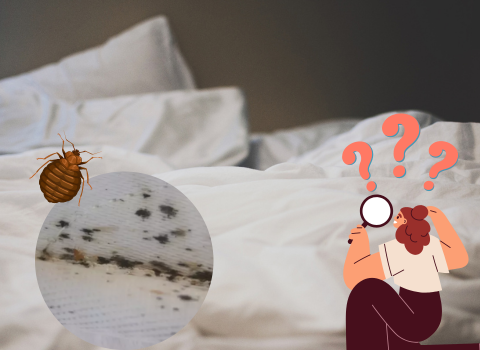
Does Bed Bug Feces Stain Sheets?
Yes, bed bug feces can stain sheets. When bed bugs excrete their feces on fabric surfaces such as sheets, dark brown or black droplets can leave noticeable stains. The stains are often concentrated and can be challenging to remove completely, especially if they have dried or become embedded in the fabric fibers.
If you discover bed bug feces stains on your sheets, it’s important to address the issue promptly. Prompt action increases the chances of successful stain removal. Laundering the sheets using hot water (120°F or higher) and an appropriate laundry detergent can help remove the stains. Additionally, using stain-removing products or pre-soaking agents specifically designed for tough stains may aid in eliminating bed bug feces stains.
It’s worth noting that the effectiveness of stain removal can vary depending on factors such as the fabric type, the age of the stain, and the laundering techniques used. For stubborn or persistent stains, professional cleaning services or specialized stain removal treatments may be necessary.
Can You See Bed Bug Poop?
Yes, bed bug poop, also known as fecal spots or droppings, is visible to the naked eye. However, their small size and dark color can make them somewhat challenging to spot, especially on dark-colored fabrics or surfaces. Bed bug droppings typically appear as small, dark brown, or black spots or stains. They may resemble ink stains, pepper flakes, or specks.
Bed bug feces are often found in areas where bed bugs reside or infest, such as on mattresses, bedding, furniture, or walls near their hiding spots. The concentration of droppings may vary depending on the extent of the infestation and the feeding activity of the bed bugs.
When inspecting for bed bug poop, it’s helpful to use a flashlight and thoroughly examine seams, crevices, folds, and other hiding places where bed bugs are known to congregate. Remember to distinguish between bed bug droppings and other types of stains or marks that may resemble them, such as ink stains or mold.
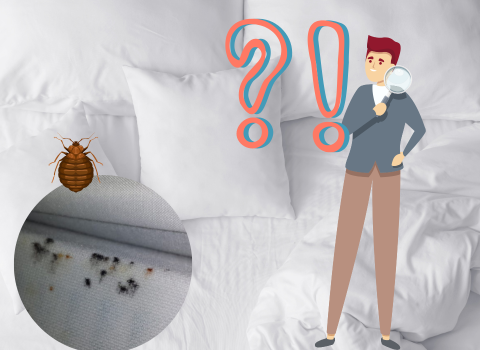
Does Bed Bug Poop Smear Wet?
Bed bug droppings typically do not smear when they are wet. Unlike some other substances that may spread or become more noticeable when wet, bed bug feces tend to retain their shape and color even when they get wet.
However, it’s important to note that if the fecal spots are rubbed or smeared while wet, they can potentially spread or create streaks on surfaces. This is why it’s generally advisable to handle any potential bed bug feces with care and avoid smearing them unintentionally.
If you come across a wet bed bug dropping, it’s best to allow them to dry before attempting to clean or remove them. Once dry, they can be more easily addressed using appropriate cleaning methods specific to the affected surface, such as gentle scraping, blotting, or using cleaning solutions recommended for that material.
Does Bed Bug Poop Look Like Mold?
Bed bug poop and mold can sometimes have similarities in appearance, especially if the mold is dark in color. However, there are notable differences between the two. Bed bug droppings usually appear as small, dark brown, or black spots or stains.
On the other hand, mold typically appears fuzzy, powdery, or patchy and can vary in color, including green, white, black, or shades of blue or gray. It’s important to differentiate between bed bug fecal matter and mold to accurately address any issues in your living space.
Does Bed Bug Poop Wipe Off?
Bed bug feces may not easily wipe off surfaces, especially if they have dried or if they have become embedded in porous materials. While it’s possible to remove fresh fecal spots by gently wiping them with a damp cloth, older or dried stains may require additional cleaning methods.
It’s crucial to avoid applying excessive force when attempting to wipe off bed bug poop, as this can cause the stain to spread or become more challenging to remove.
What Color Do Bed Bug Feces Smear?
When bed bug droppings smear, they typically retain their original color, which is dark brown or black. The smearing effect may cause the color to spread or create streaks on the affected surface. However, the color of the smears will still be within the range of dark brown to black.
Keep in mind that smearing can occur if you accidentally rub or disrupt fresh or wet fecal spots.
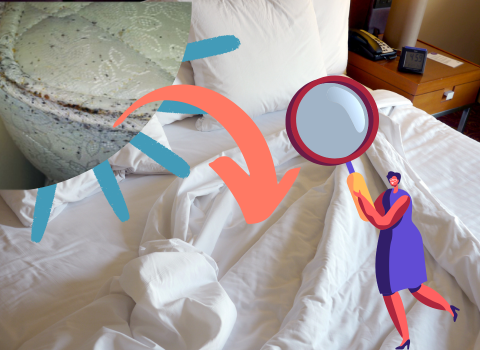
How Do You Get Rid of Bed Bug Poop Stains?
Discovering bed bug poop stains can be a distressing experience but worry no more! Whether it’s clothing, bedding, or furniture, there are practical tips and techniques you can do to eliminate bed bug poop stains and restore cleanliness to your surroundings.
Act Quickly:
As soon as you spot bed bug poop stains, it’s crucial to act swiftly. Fresh stains are typically easier to remove compared to older, set-in stains. Prompt attention minimizes the likelihood of the stains becoming more stubborn and deeply embedded in the fabric.
Pre-Treat Stained Items:
Before washing or treating the stained items, it’s beneficial to pre-treat them. Start by gently scraping off any dried residue with a dull knife or brush to loosen the stain. Avoid using excessive force to prevent spreading the stain further.
Launder Clothing and Bedding:
For washable items such as clothing, bedding, and linens, laundering is the go-to method. Wash the stained items in hot water, preferably at a temperature of 120°F (49°C) or higher, as bed bugs and their feces are sensitive to heat. Use a heavy-duty laundry detergent and follow the care instructions on the fabric label. Consider adding stain-removing products or pre-soaking agents specifically designed for tough stains.
Treat Upholstered Furniture:
Cleaning upholstered furniture stained with bed bug droppings requires a different approach. Vacuum the affected areas thoroughly using a brush attachment to remove loose debris and surface stains.
Afterward, use an upholstery cleaner or a mixture of mild detergent and warm water to gently scrub the stained spots. Blot the area with a clean cloth or sponge, being careful not to saturate the fabric. Allow the furniture to air dry completely.
Consult Professionals for Delicate or Difficult Items:
In the case of delicate or difficult-to-clean items, such as heirlooms, antique furniture, or heavily soiled mattresses, it’s advisable to seek professional assistance.
Certified cleaning experts or pest control professionals have the necessary expertise and tools to tackle challenging situations effectively.
With these practical methods at your disposal, you can bid farewell to bed bug poop stains and restore cleanliness to your belongings.
After you find bed bug droppings and get rid of the stains, make sure that you also address the bed bug infestation immediately. This is the only way to avoid getting the same stains again and put an end to bed bugs infesting your home.

